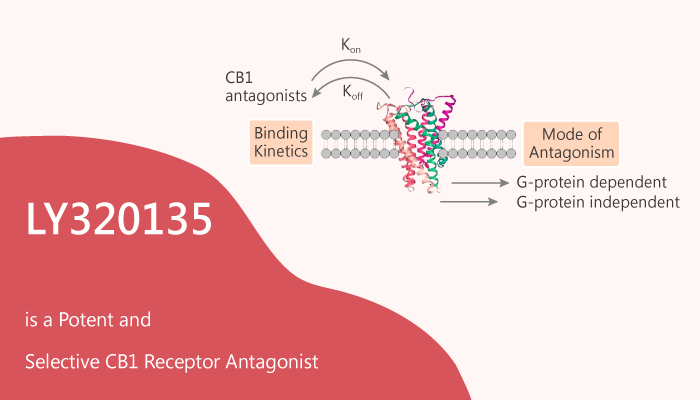Cannabinoids (CBs) implicate in a number of physiological and pathological mechanisms in the central nervous system. The cannabinoid receptor family consists of two GPCRs, cannabinoid receptor 1 (CB1) and cannabinoid receptor 2 (CB2). Moreover, CB1 and CB2 each activate multiple pathways. In particular, CB1 plays a role in regulating neurotransmission in many brain regions. CB1 plays a role in regulating neurotransmission in many brain regions. When activated, CB2 regulates immune responses and inflammatory pathways. LY320135 is a selective antagonist for the brain CB1 receptor, having greater than 70-fold higher affinity for the CB1 than the peripheral CB2 receptor. Especially, The Ki values for LY320135 at the CB1 and CB2 receptors are 224 nM and 10 μM, respectively.

LY320135 functionally reverses anandamide-mediated adenylate cyclase inhibition in Chinese hamster ovary (CHO) cells stably expressing the CB1 receptor. LY320135 also blocks WIN 55212-2-mediated inhibition of N-type calcium channels, and activation of inwardly rectifying potassium channels in N18 and AtT-20-CB2 cells, respectively.
CB1 receptors are G-protein coupled receptors (GPCRs) abundant in neurons, in which they modulate neurotransmission. The CB1 receptor influence on memory and learning, and disease states associate with CB1 receptors. These diseases include motor dysfunction, schizophrenia, and in bipolar, depression, and anxiety disorders. CB1 receptors are G-protein coupled receptors (GPCRs) initially described as having such great abundance in brain tissue and neuronal cells, that the much lower levels in other tissues appeared to be of lesser significance.
To summarise, LY320135 is a promising lead compound for the further development of potent and selective cannabinoid antagonists.